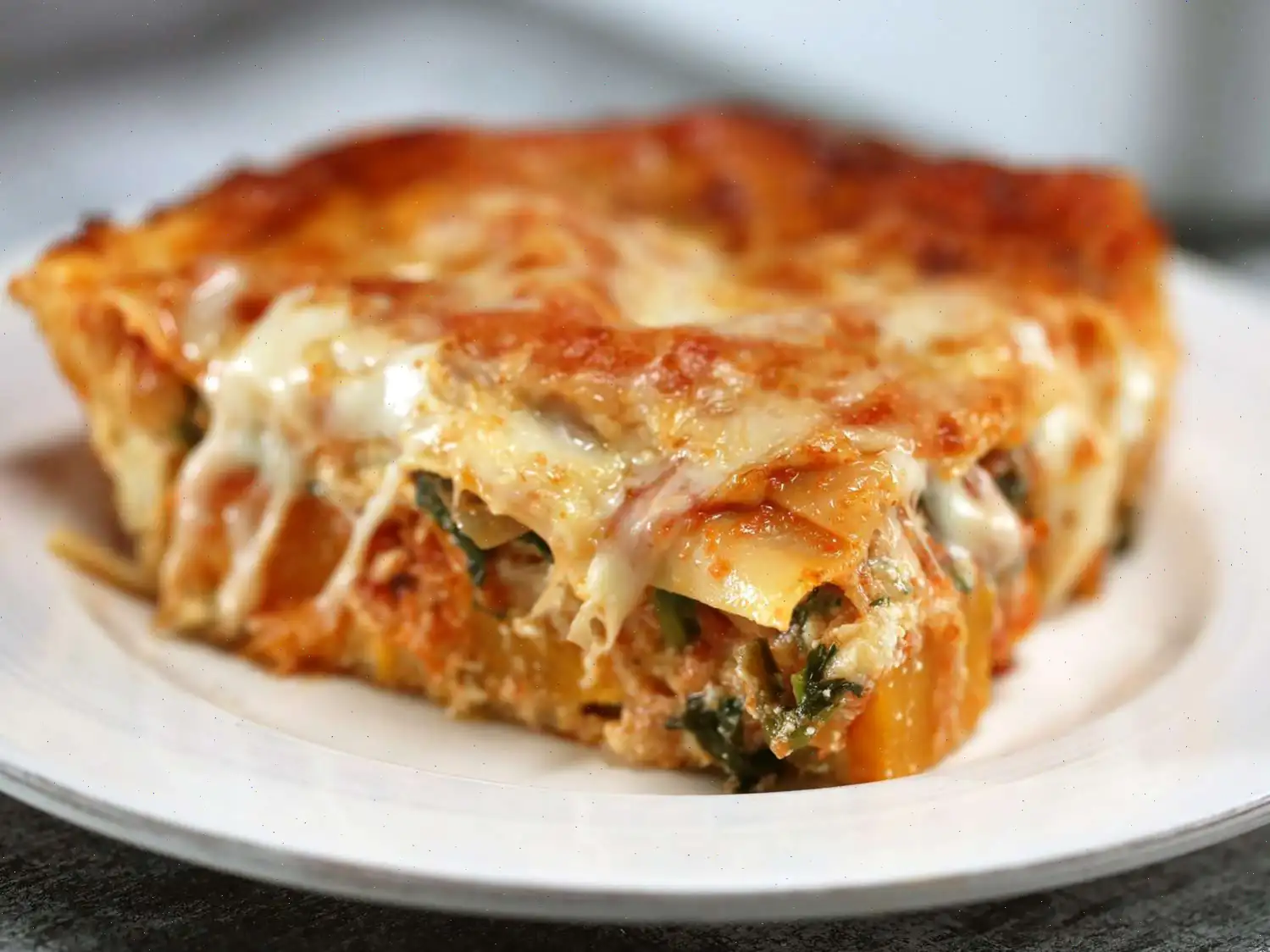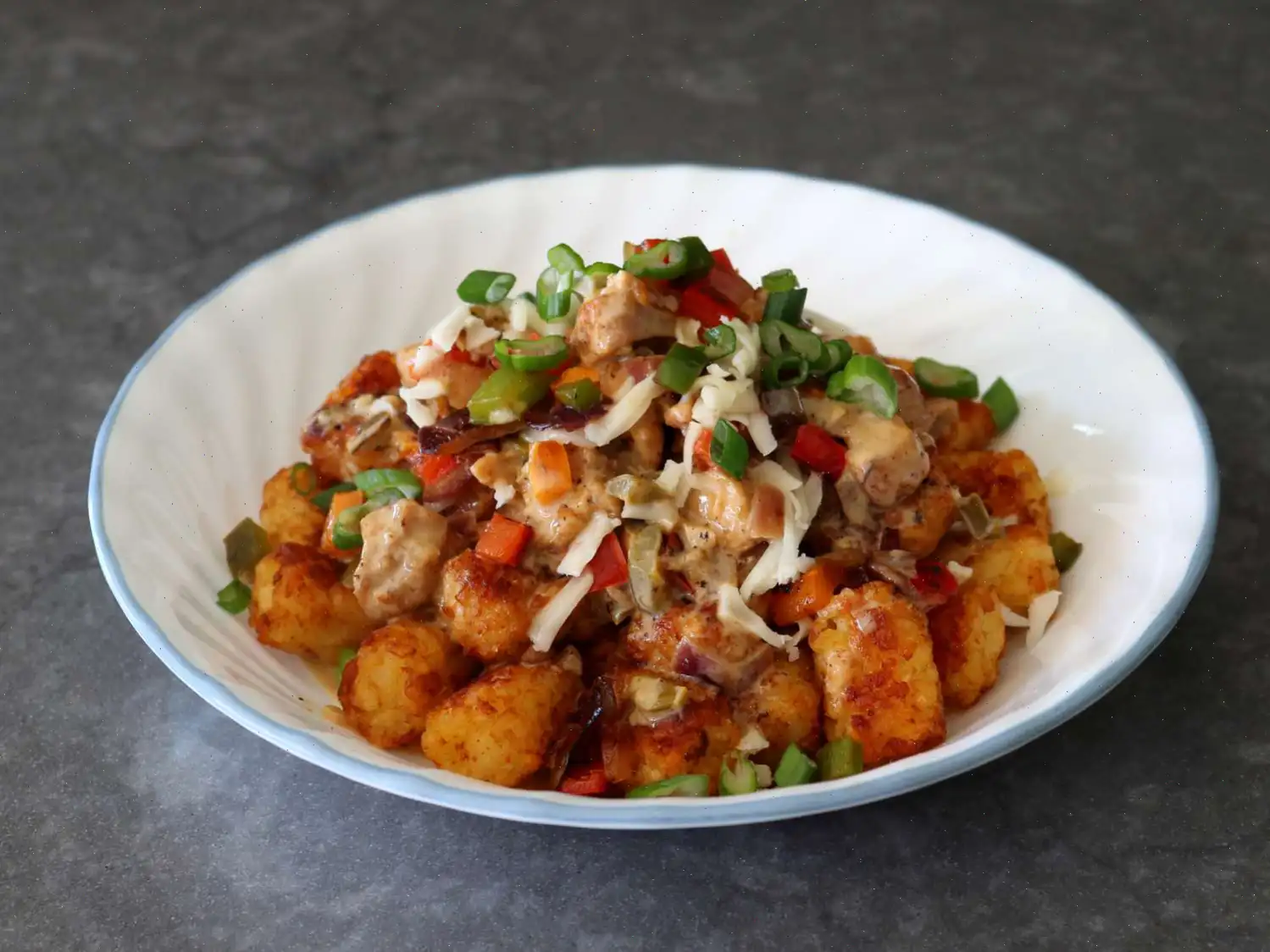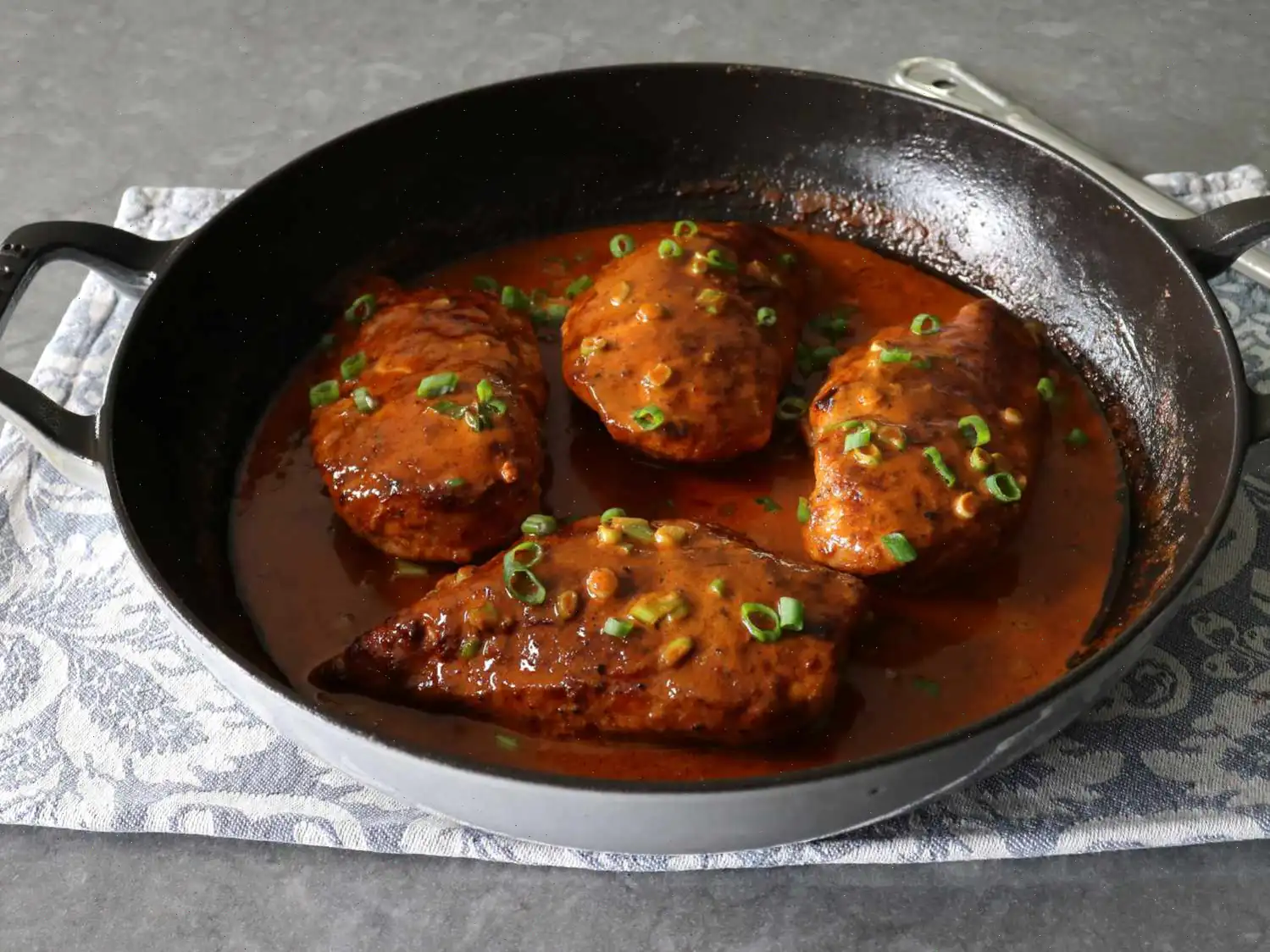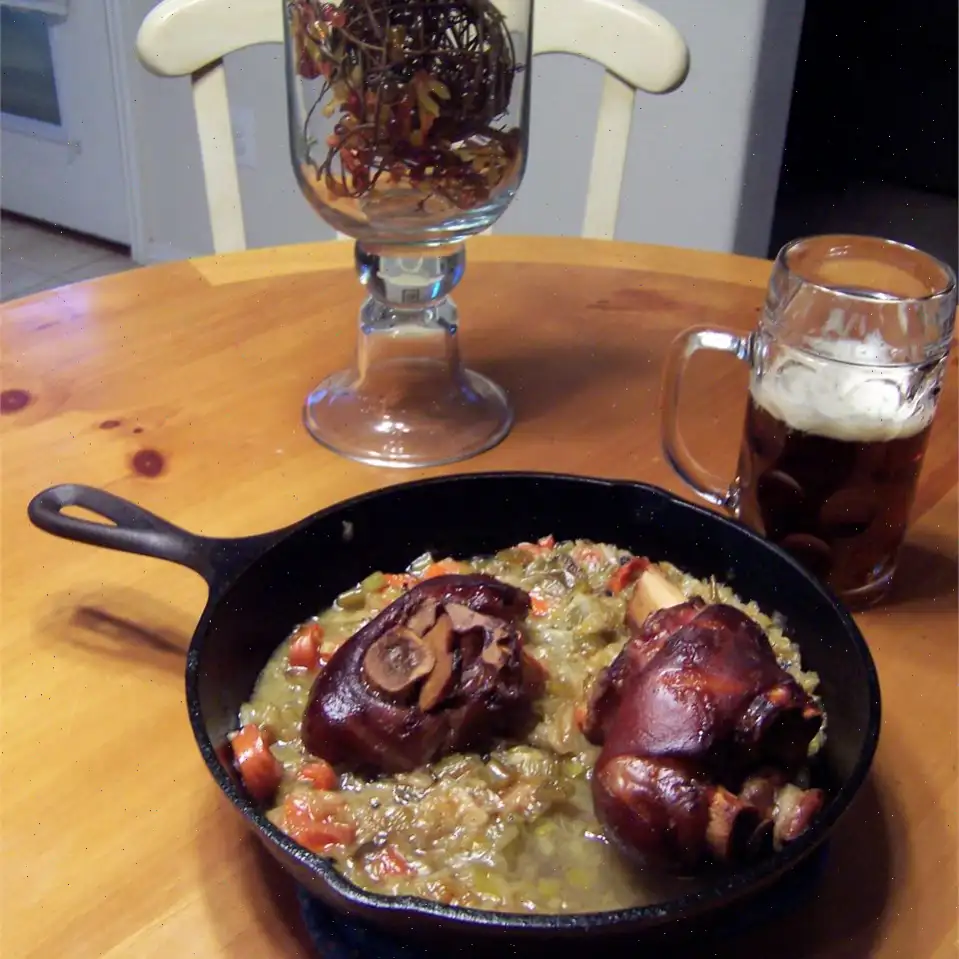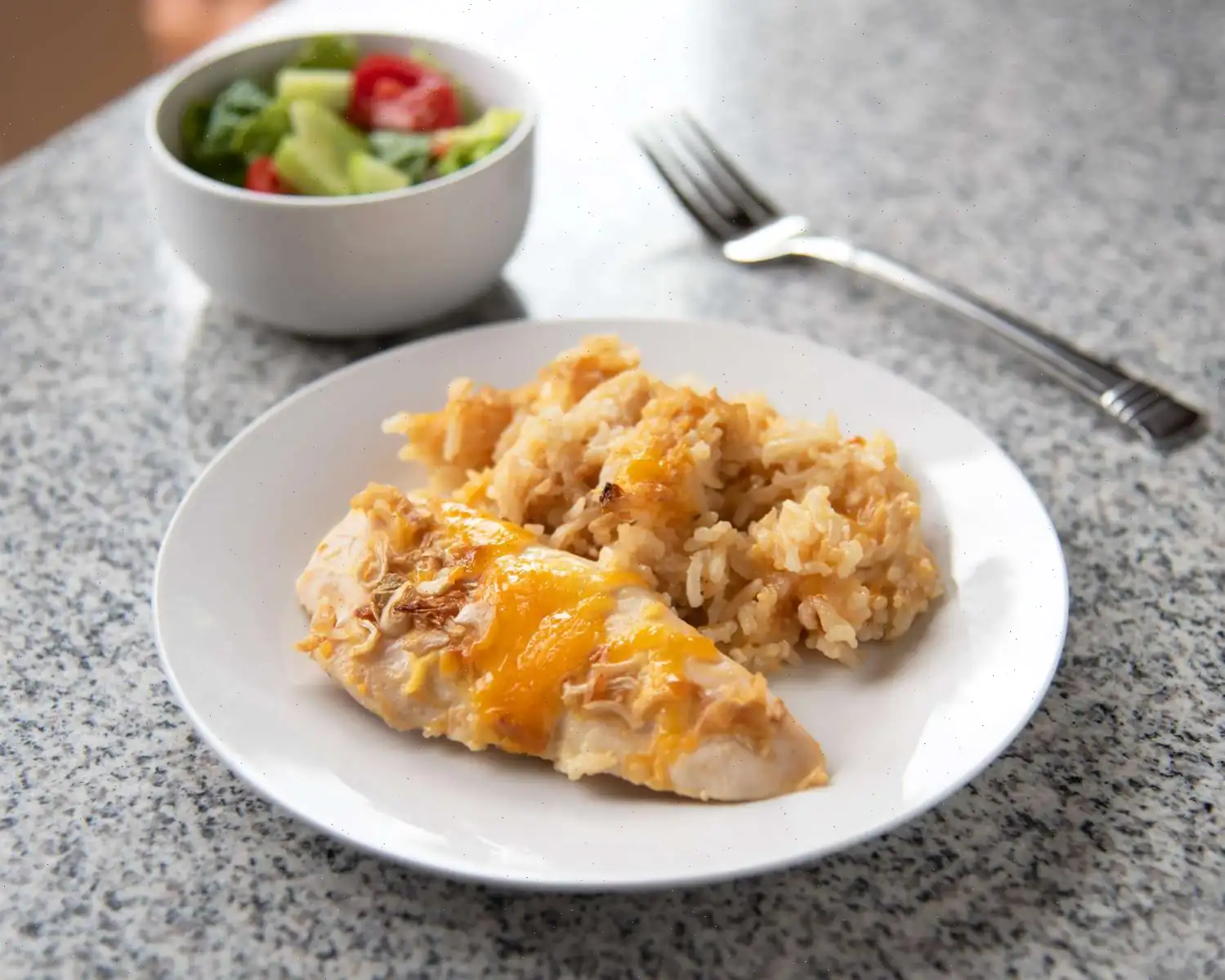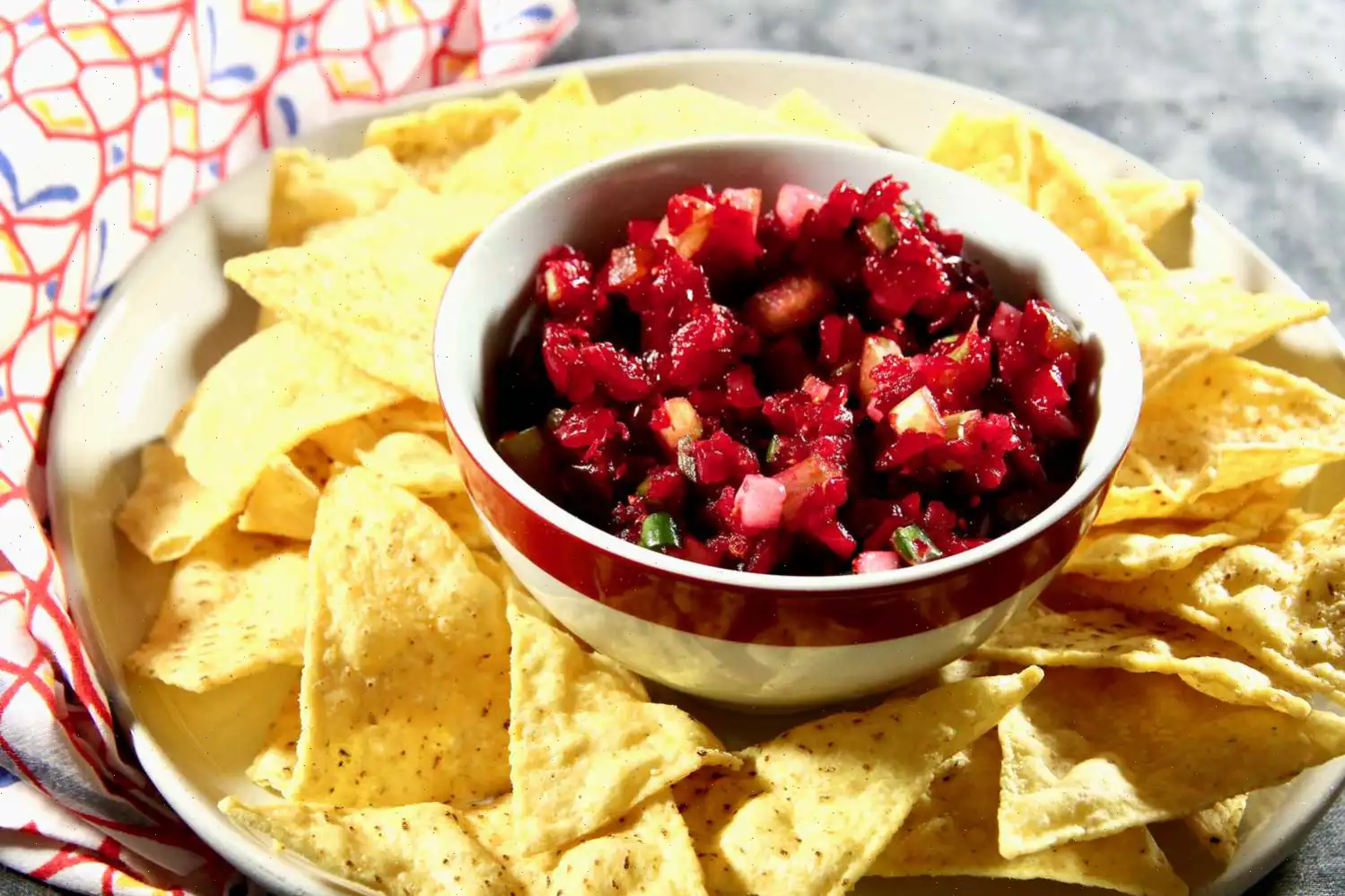
Roasted Butternut Squash and Spinach Lasagna Recipe
Ingredients
- 6 cups cubed butternut squash
- 4 teaspoons olive oil, divided
- 1 1/2 teaspoons kosher salt, divided
- 3/4 teaspoon freshly ground black pepper, divided
- 1 cup chopped yellow onion
- 10 cups fresh spinach
- 2 cups shredded provolone cheese
- 1 cup shredded mozzarella cheese
- 1 (32 ounce) whole milk ricotta cheese
- 1/2 cup chopped fresh flat-leaf parsley
- 2 large eggs
- Cooking spray
- 5 cups marinara sauce
- 12 oven-ready lasagna noodles
- 1 cup grated Parmesan cheese
Directions
- Preheat your oven to 400F (200C).
- In a large bowl, toss together the butternut squash with 2 teaspoons of olive oil, 1/2 teaspoon of kosher salt, and 1/4 teaspoon of black pepper. Spread the mixture in a single layer on a rimmed baking sheet.
- Bake for 15 to 20 minutes, or until the squash is softened and lightly browned. Remove from the oven and set aside.
- While the squash is baking, heat the remaining 2 teaspoons of olive oil in a large skillet over medium-high heat. Add the chopped onion and 1/4 teaspoon of salt. Cook, stirring often, until the onion is softened and translucent, about 3 to 4 minutes.
- Add the spinach to the skillet and cook, stirring frequently, until wilted, 1 to 2 minutes. Remove the skillet from the heat and set aside.
- In a separate bowl, combine the shredded provolone and mozzarella cheeses. Set aside.
- In a large mixing bowl, stir together the ricotta cheese, parsley, eggs, 1 1/2 cups of the shredded cheese mixture, and the remaining 3/4 teaspoon of salt and 1/2 teaspoon of pepper.
- Lightly coat a 13x9-inch baking dish with cooking spray. Spread 1 cup of marinara sauce on the bottom of the dish.
- Arrange 4 lasagna noodles side by side over the marinara sauce. Spread half of the ricotta mixture evenly over the noodles.
- Spread the roasted butternut squash evenly over the ricotta mixture. Then, top with 1 1/2 cups of marinara sauce.
- Place another layer of 4 noodles over the squash and ricotta mixture. Spread the remaining ricotta mixture evenly over the noodles.
- Spread the spinach mixture evenly over the ricotta, and then top with another 1 1/2 cups of marinara sauce.
- Top the lasagna with the remaining 4 noodles and 1 cup of marinara sauce. Sprinkle with grated Parmesan cheese and the remaining shredded provolone-mozzarella mixture.
- Cover the baking dish with aluminum foil and bake at 400F (200C) for 35 minutes.
- After 35 minutes, uncover the lasagna and continue baking for an additional 20 minutes, or until the top is golden and bubbly.
- Let the lasagna stand for 10 minutes before cutting it into 10 slices. Serve and enjoy!
Nutrition Facts (per serving)
- Calories: 600
- Total Fat: 29g (38% DV)
- Saturated Fat: 16g (79% DV)
- Cholesterol: 120mg (40% DV)
- Sodium: 1353mg (59% DV)
- Total Carbohydrates: 54g (20% DV)
- Dietary Fiber: 9g (31% DV)
- Total Sugars: 11g
- Protein: 32g (63% DV)
- Vitamin C: 35mg (39% DV)
- Calcium: 650mg (50% DV)
- Iron: 4mg (25% DV)
- Potassium: 1197mg (25% DV)
The Story Behind Roasted Butternut Squash and Spinach Lasagna
Roasted Butternut Squash and Spinach Lasagna is a modern twist on the classic Italian lasagna. Traditional lasagna dates back to the Middle Ages in Italy, evolving from layered pasta dishes that combined simple ingredients such as cheese, herbs, and sauces. The use of butternut squash in lasagna is a more contemporary adaptation, popularized in the late 20th century by chefs seeking seasonal, vegetarian-friendly alternatives. This combination highlights the natural sweetness of roasted squash while maintaining the rich, comforting texture that lasagna is known for.
Regional Variations and Characteristics
This particular lasagna is strongly influenced by Northern Italian cuisine, where creamy cheeses and roasted vegetables are commonly paired with pasta. In regions like Emilia-Romagna, traditional lasagna often features bchamel sauce and meat, but in Tuscany and Lombardy, vegetables such as spinach, pumpkin, and squash are frequently incorporated into baked pasta dishes. Local variations may include adding nutmeg to the ricotta mixture or incorporating different types of cheese, such as fontina or Asiago, to enhance flavor depth.
How It Differs from Similar Dishes
Unlike classic meat lasagna or traditional spinach lasagna, this recipe emphasizes the sweetness of roasted butternut squash combined with the earthy taste of fresh spinach. The layering technique remains similar, but the flavor profile is lighter and slightly sweeter due to the squash. The dish also differs from vegetable lasagnas that rely solely on zucchini or mushrooms, offering a unique balance of textures between creamy ricotta, tender roasted squash, and melted cheeses like provolone and mozzarella.
Typical Serving Occasions
Roasted Butternut Squash and Spinach Lasagna is most often served during fall and winter, when squash is in season, and is commonly found at family gatherings, holiday dinners, or vegetarian-focused restaurants. It pairs well with crisp salads, garlic bread, or a light red wine. While it can be a weeknight dinner, its elegant presentation also makes it suitable for festive occasions or potlucks.
Interesting Facts
- Butternut squash is rich in vitamins A and C, making this lasagna not only flavorful but also nutritious.
- The combination of roasted squash and ricotta provides a naturally creamy texture, reducing the need for heavy cream.
- Vegetarian lasagnas like this one have gained popularity globally as plant-based diets become more widespread.
- Layering roasted squash and spinach helps retain moisture during baking, preventing the noodles from drying out.
- Adding fresh parsley to the ricotta mixture brightens the overall flavor and adds a subtle herbal note that complements the sweetness of the squash.
You can listen to this recipe in AI audio format. Simply click the play button below to listen to the content in a format that suits you best. It’s a great way to absorb information on the go!
FAQ about Roasted Butternut Squash and Spinach Lasagna Recipe
Comments
John Diaz
08/28/2022 08:43:39 PM
This dish was absolutely delightful! The time I dedicated to preparing it truly paid off! I appreciate having a fantastic recipe that offers a meatless alternative. I decided to enhance the ricotta mixture with some Italian seasoning and garlic powder to suit my taste, but I stuck to the original recipe for everything else.


